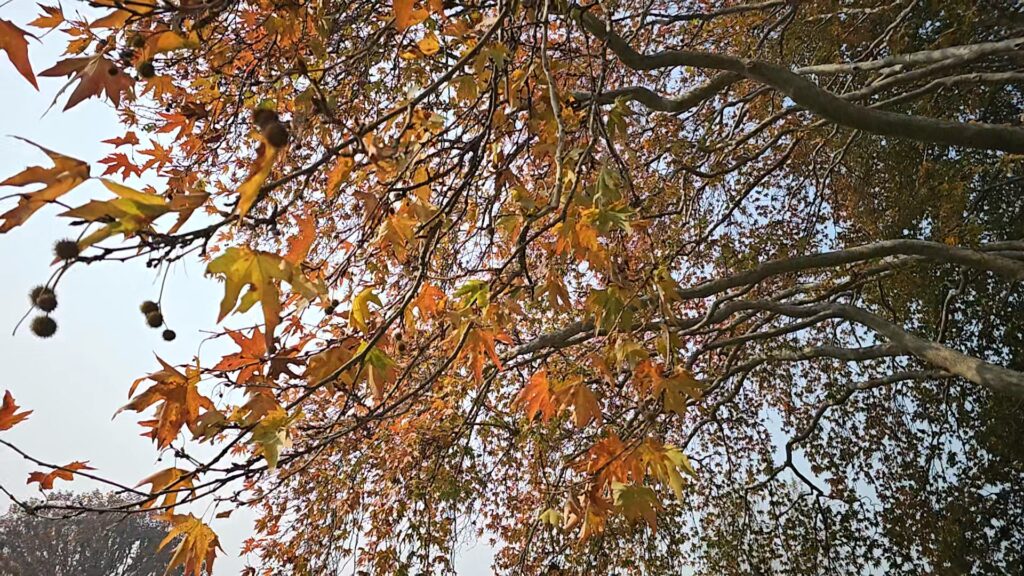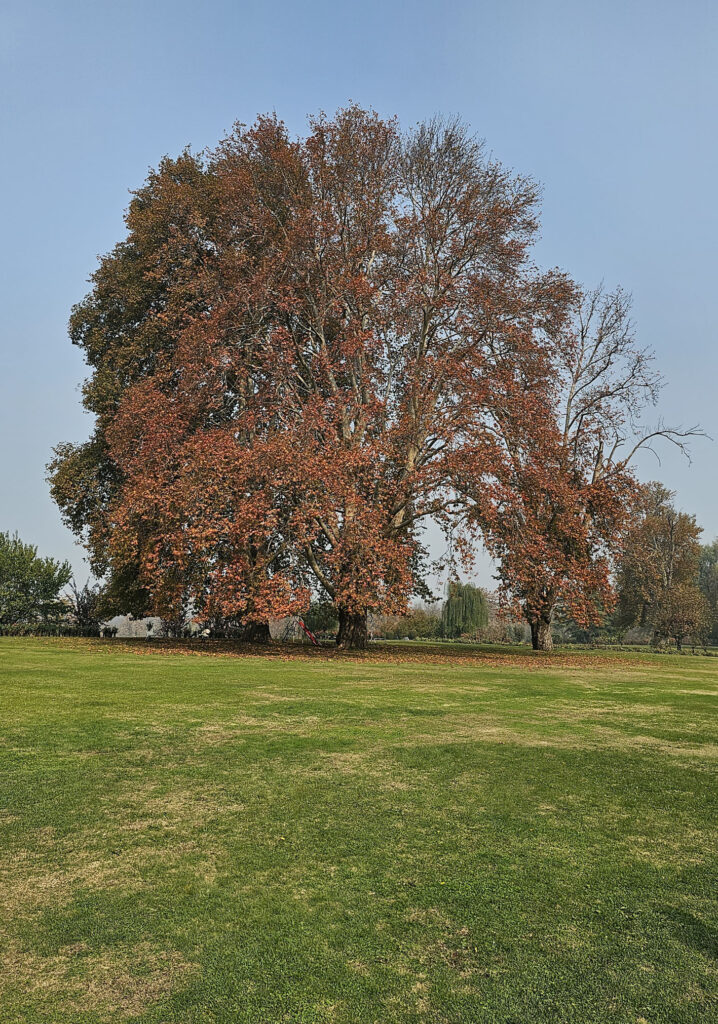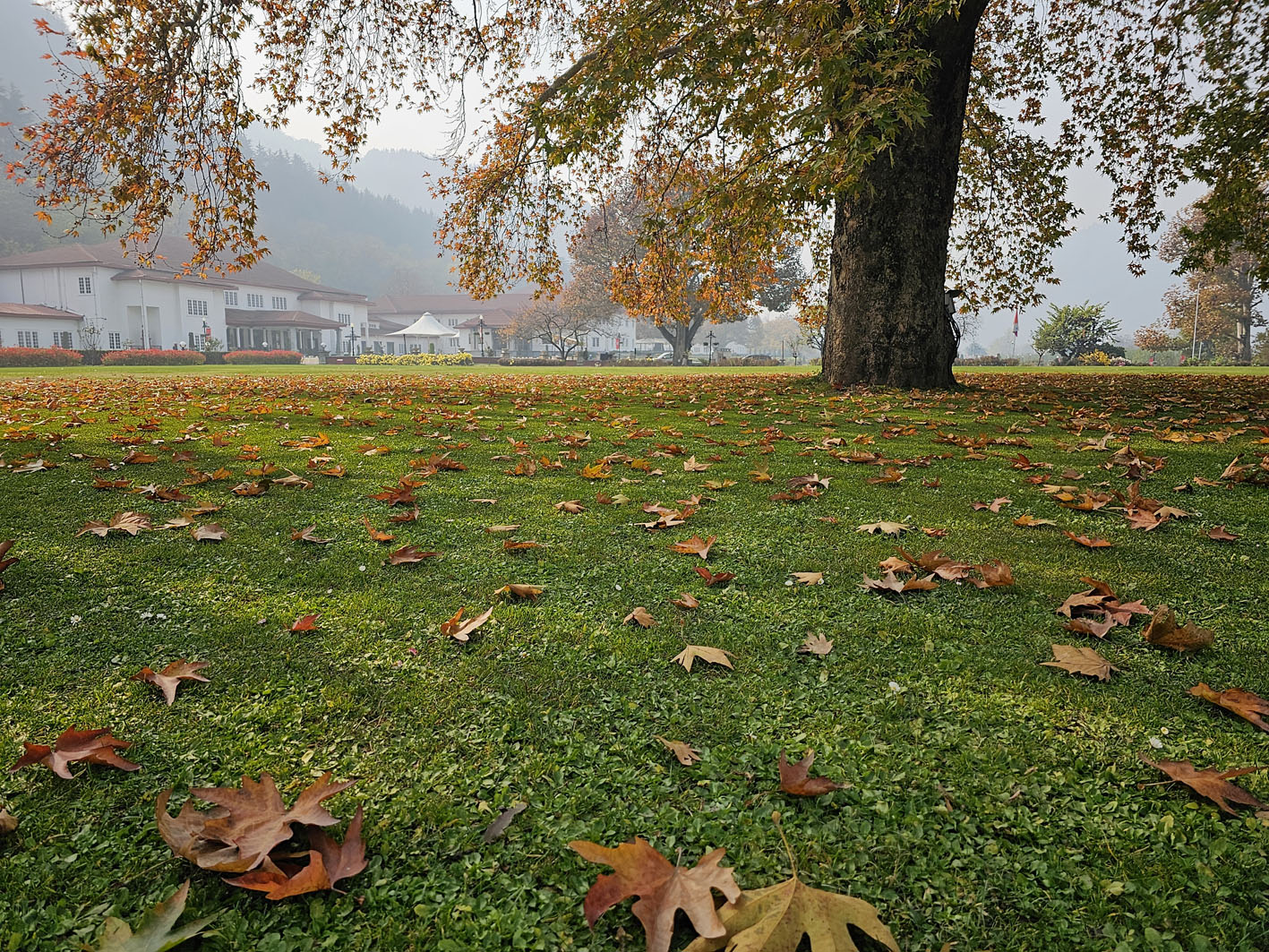The colors of Kashmir’s Chinar leaves are changing from green to a beautiful red, making the landscape look poetic. It’s not just a pretty sight; each fallen leaf represents the shortness of life in the culture and art of the region.
By Khursheed Dar
The Chinar tree, scientifically identified as Platanus orientalis, stands proudly as a deciduous wonder native to the enchanting region of Kashmir, boasting its distinctive allure with leaves ablaze in hues of vibrant red and orange. As these leaves gracefully descend, they herald the advent of the autumn season in Kashmir—a cherished time of natural splendor and profound cultural significance.
Embedded deeply within the drapery of Kashmiri culture and history, the Chinar tree occupies a revered space. Revered as a symbol of longevity, it is intricately intertwined with the concept of eternal life. Its leaves serve as muse and medium, finding expression in diverse art forms such as intricate papier-mâché crafts and traditional Kashmiri embroidery. Indeed, the Chinar tree emerges as an emblem, intricately woven into the rich heritage of the region.

As the lingering summer heat gradually yields to cooler temperatures, the Chinar trees undergo a remarkable metamorphosis. Initially adorned in lush green, their leaves undergo a breathtaking transition, shifting through shades of yellow and orange before culminating in a resplendent crimson red. This transformation serves as a poignant testament to the cyclical beauty inherent in the region, where each passing season unveils its unique and captivating charm.
The cascade of Chinar leaves, beyond being a mere visual spectacle, signals the commencement of a festive season in Kashmir. Locals eagerly await this time, as it coincides with the harvest season, prompting farmers to reap the rewards of their labor. Markets teem with an abundance of fresh produce and local delicacies, beckoning families to come together in joyous celebration, with the air redolent with the enticing aroma of traditional Kashmiri dishes.
Autumn in Kashmir also bequeaths a delightful shift in climate, as the scorching heat of summer relinquishes its grip to a mild and comfortable atmosphere. This climatic shift becomes a magnet for tourists worldwide, drawing them to Kashmir to witness the breathtaking spectacle of Chinar leaves. The region’s renowned gardens, including the illustrious Shalimar Bagh, Nishat Bagh, and Chashme Shahi, transform into popular havens for visitors seeking to immerse themselves in the kaleidoscope of autumnal colors.
Photographers and nature enthusiasts alike find themselves entranced by the Chinar trees, offering an ideal subject for their artistic endeavors. The interplay of sunlight with the leaves creates a magical ambiance, and capturing the fall of Chinar leaves in photographs evolves into a cherished hobby for many. These captivating images often find their way onto calendars, postcards, and travel magazines, perpetuating the irresistible allure of Kashmir’s autumn to a global audience.

The Chinar leaves, beyond their aesthetic appeal, carry profound symbolism for the denizens of Kashmir. They serve as a poignant reflection of the transient nature of life. Much like the leaves gracefully descending from the branches, life too is ephemeral, a realization deeply ingrained in the poetry, art, and philosophy of the region. Renowned Kashmiri poets such as Lal Ded and Habba Khatoon eloquently weave the imagery of the Chinar tree and its changing leaves into their verses, infusing them with timeless wisdom.
For local artists and artisans, the Chinar trees serve as a wellspring of inspiration. The intricate shapes of the leaves find expression in various art forms, ranging from handmade paper to exquisite handwoven Pashmina shawls. The Chinar leaf motif, with its inherent beauty, adorns numerous traditional Kashmiri crafts, becoming a testament to the enduring influence of nature on the artistic endeavors of the local community.
The fall of Chinar leaves in Kashmir transcends the realm of visual delight; it morphs into a poignant reminder of the relentless passage of time, the eternal beauty of nature, and the indomitable resilience of a culture deeply rooted in its surroundings. The brilliance of autumn in Kashmir stands as a testament to the harmonious coexistence between humanity and nature in this picturesque region. As the Chinar leaves gracefully continue their descent, they bring with them not just a spectacle but a sense of wonder and an unwavering connection to the land, making autumn in Kashmir an experience unlike any other.
The views expressed in this article are solely those of the author and do not necessarily reflect the opinions or views of this Magazine. The author can be reached at [email protected]

Leave a Reply